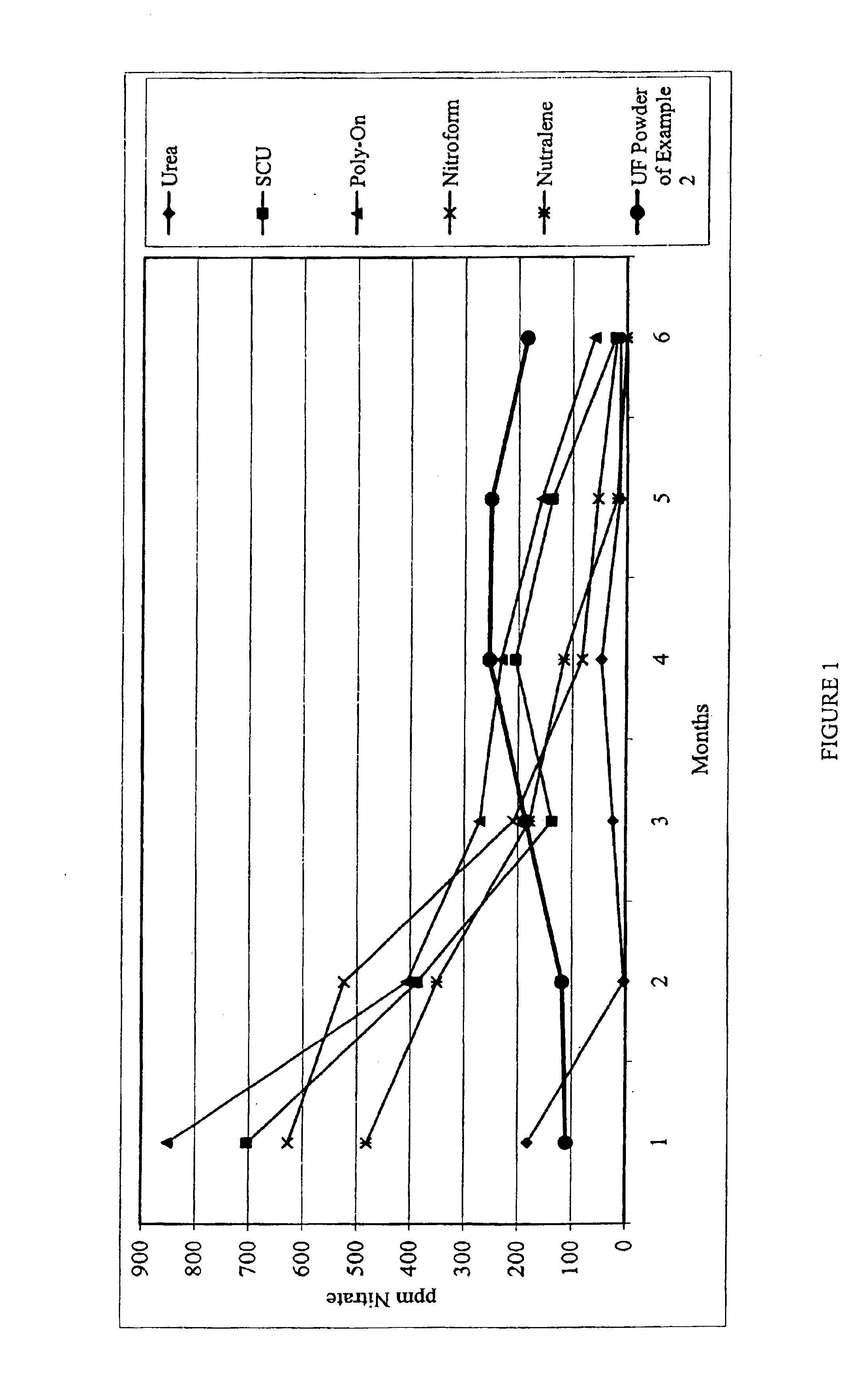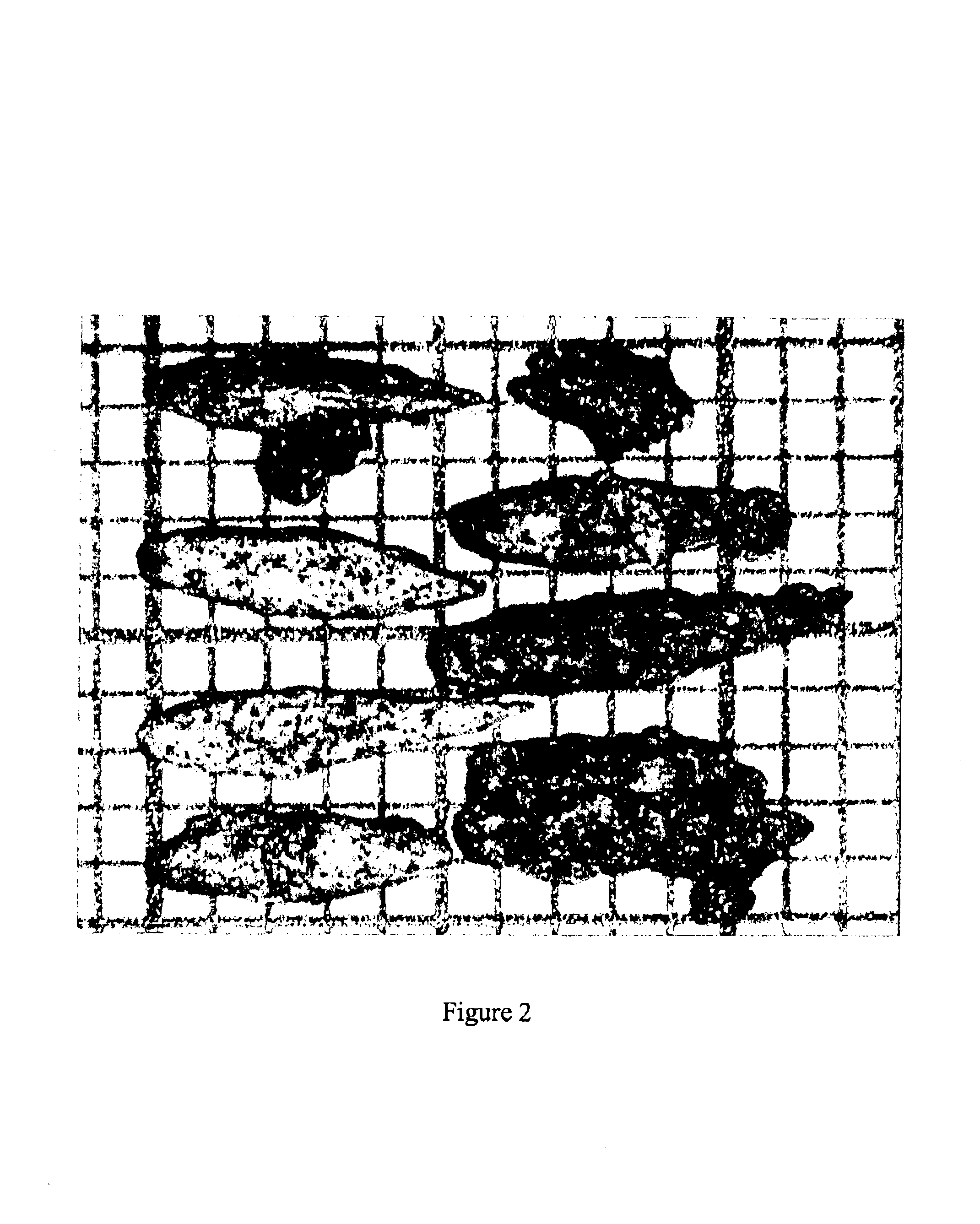Slow release nitrogen root treatment
a nitrogen root and slow technology, applied in the direction of nitrogenous fertilisers, biocide, liquid fertilisers, etc., can solve the problems of not being routinely used in the composition of root treatment, preventing general acceptance, and disadvantages of leaching nutrients very quickly into and through the soil
- Summary
- Abstract
- Description
- Claims
- Application Information
AI Technical Summary
Benefits of technology
Problems solved by technology
Method used
Image
Examples
example 1
[0056]A urea-formaldehyde (UF) dispersion, suitable for producing UF polymer particles of the present invention, is prepared as follows. Water (32.3 parts by weight) and a 50% aqueous solution of formaldehyde (31.8 parts by weight) are added to a reaction vessel equipped with vacuum reflux, a heater and a mixer. While adjusting the temperature of the agitated aqueous mixture to 100° F., its pH is also adjusted to about 7.0 (6.8 to 7.2) using either 50% caustic (NaOH), or 35% sulfuric acid, as needed. Once the aqueous mixture has been heated to 100° F. (about 38° C.), 31.8 parts by weight of prilled urea also is added and mixing is continued. The temperature of the agitated aqueous mixture then is increased to 120° F. (about 50° C.) and held for a time (usually about 15 minutes) sufficient to dissolve the urea. While maintaining the temperature of the agitated mixture at 120° F. (about 50° C.), the pH is adjusted to within the range of 8.0 to 8.4, again using either 50% caustic (NaOH...
example 2
[0057]The dispersion made in accordance with Example 1 can then be spray dried to produce UF polymer particles. A Niro P6 spray dryer can be fed with 15 pounds per hour of the dispersion of Example 1. The spray dryer receives an inlet gas stream at a flow rate of about 415 standard cubic feet per minute and a temperature of 330-340° F. (165-170° C.). The outlet temperature of the spray dryer was measured as 75-95° F. (25-35° C.). The recovered UF polymer particle product (at about 1 wt. % moisture) had particle sizes distributed from 10 to 80 microns, with a number average size of 30 microns.
example 3
[0058]Using a Niro industrial-sized spray dryer (ON 030-5051), a UF polymer dispersion made in accordance with Example 1 having about a 38 wt. % solids content, at a temperature of 28° C. and at a feed rate of 100 lbs / minute was spray-dried with the atomizer wheel operating at 13,000 RPMs. Air, at a flow rate of 49,400 standard cubic feet per minute and at a temperature of 186° C. was delivered to the spray dryer. The outlet air temperature was measured as 88° C. Spray-dried UF polymer particles were recovered from the spray dryer.
PUM
| Property | Measurement | Unit |
|---|---|---|
| time | aaaaa | aaaaa |
| reaction temperature | aaaaa | aaaaa |
| temperature | aaaaa | aaaaa |
Abstract
Description
Claims
Application Information
 Login to View More
Login to View More - R&D
- Intellectual Property
- Life Sciences
- Materials
- Tech Scout
- Unparalleled Data Quality
- Higher Quality Content
- 60% Fewer Hallucinations
Browse by: Latest US Patents, China's latest patents, Technical Efficacy Thesaurus, Application Domain, Technology Topic, Popular Technical Reports.
© 2025 PatSnap. All rights reserved.Legal|Privacy policy|Modern Slavery Act Transparency Statement|Sitemap|About US| Contact US: help@patsnap.com


